By Suzanne Zelazo
Mated moons orbit Roger Conover’s archival base in South Freeport, Maine. Symbolic of Mina Loy and Arthur Cravan, two half-moon crescents made of white stone and desert sand punctuate the property, their collisionless encounter marking Loy’s “white-light district/ of lunar lusts.”1 Loy’s literary executor, rediscoverer, editor, and poet-boxer, Conover is also an installation artist who has spent a career building a living, processual baedeker to modernism. Equal parts avant-garde library, contemporary art gallery, artist’s studio, weight room, and subaltern spa, the Gesamtkunstwerk that is Conover’s home is bio-rhythmically attuned to the art and energy of Loy and Cravan.
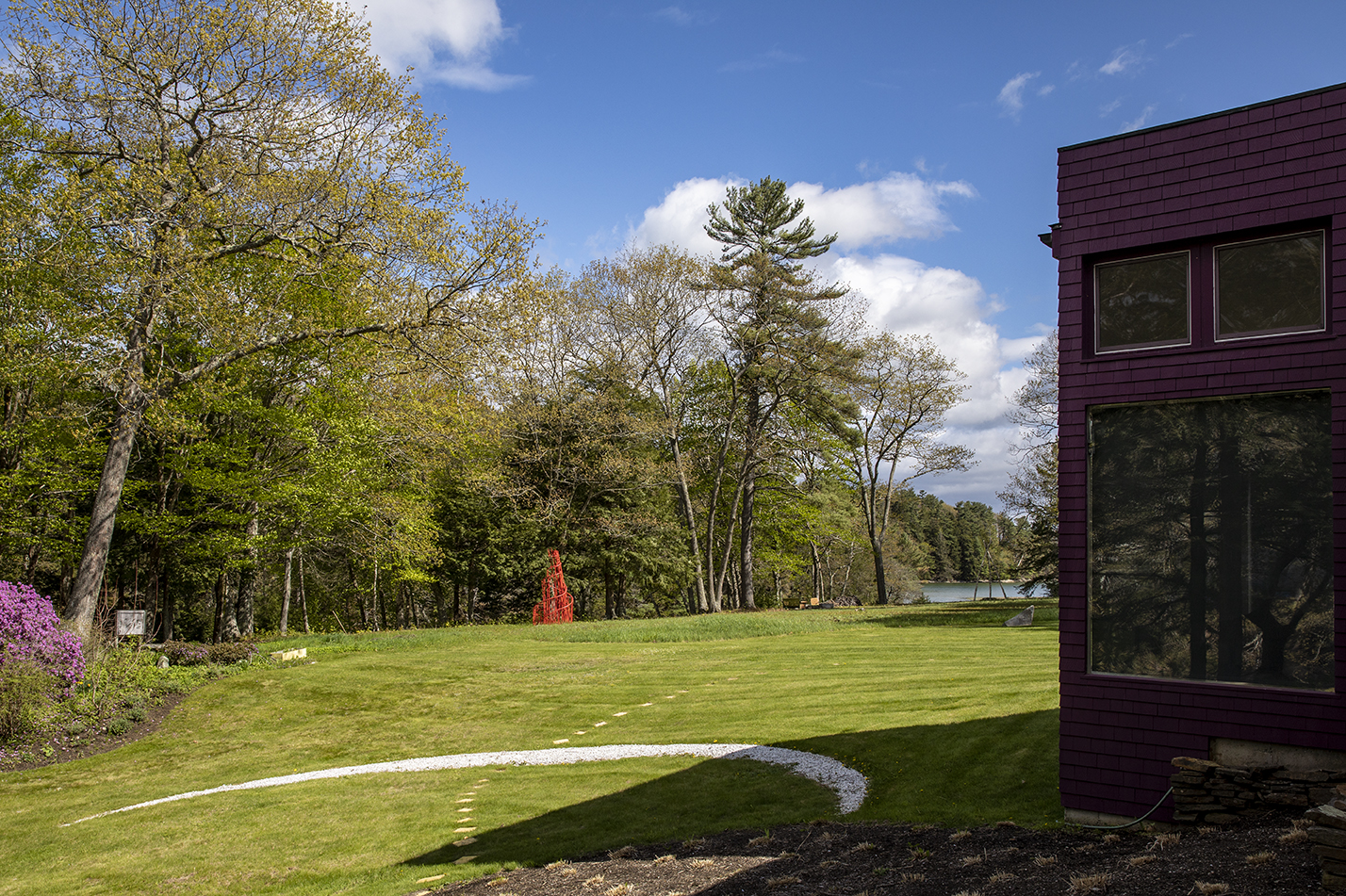
Conover has recently written about the process of acquiring some of Loy’s late Bowery constructions (one of which can now be viewed in a StoryMap on this site). But, long before there was an internet, he was pursuing all possible leads in search of Mina Loy’s rarely seen and long-lost drawings, constructions, and paintings, with the intent of doing for her visual work what he has done for her poetry—bringing it back from oblivion, recovering it from neglect, making it known and loved again. A long-awaited exhibition of Mina Loy’s art work will open at the Bowdoin College Museum of Art in 2022, before traveling to other venues.
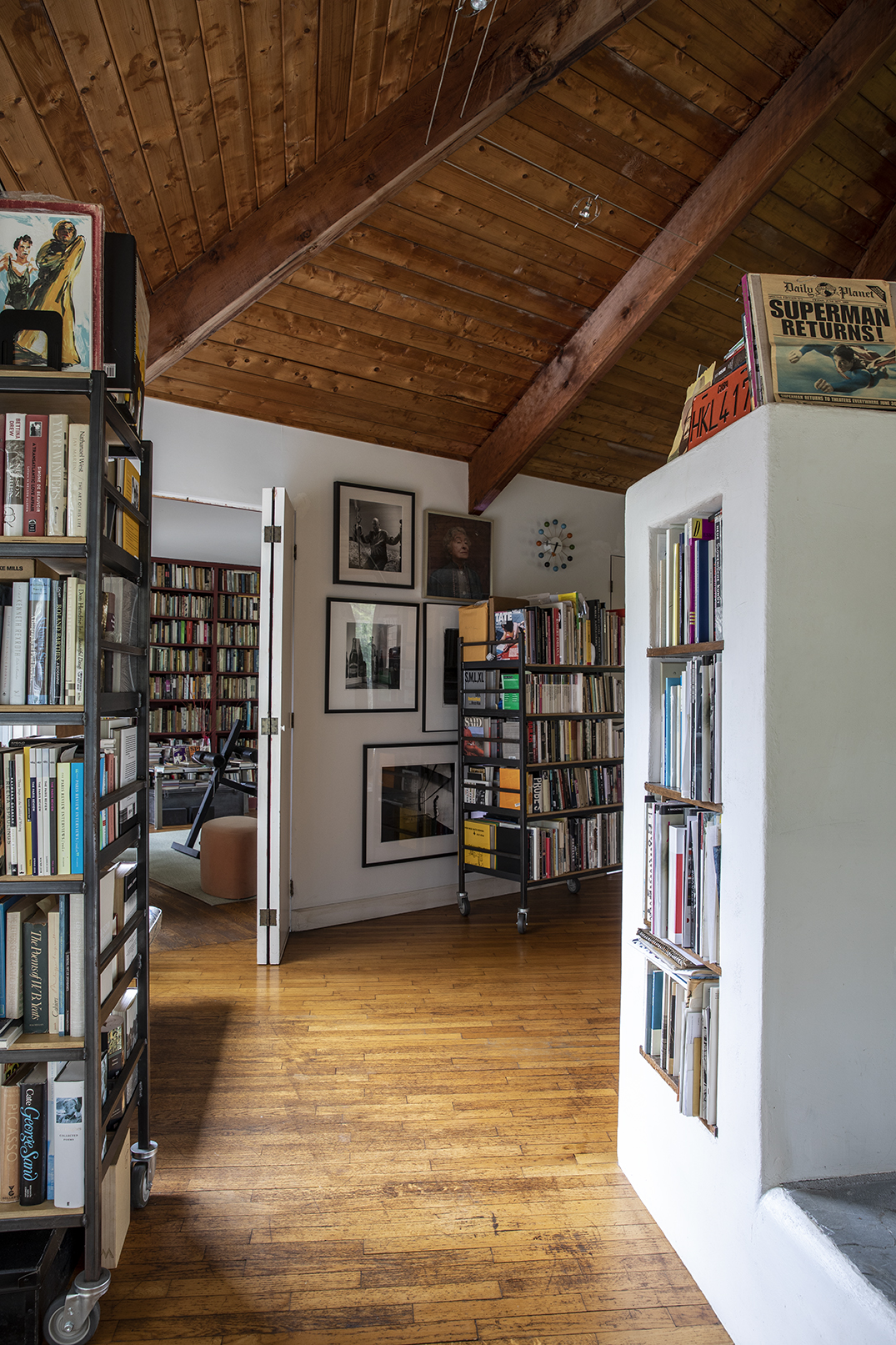
Conover’s living and working space has enabled Loy’s visual and literary work to interpenetrate, but also to shift organically with the surroundings. “I am interested in the ways that writing occupies space in the environment, that buildings occupy intellectual ground, and that art blurs into life,” Conover has said.2 Literary ephemera accents the Loyland that is his property. Along the walkway, weatherworn texts narrate in their unfolding, their pages turned not by fingers but the wind. Sun-bleached typefaces reveal the ambient silences that both Loy and Cravan championed—erasures of appearance. Inebriate ghosts, irreverent dancers, and Greenwich Village revelers summoned from another time, seem to pivot, sidestep, and pirouette up and down the path. In withdrawing, a searchlight: a first encounter with the energy field that is Roger Conover’s home.
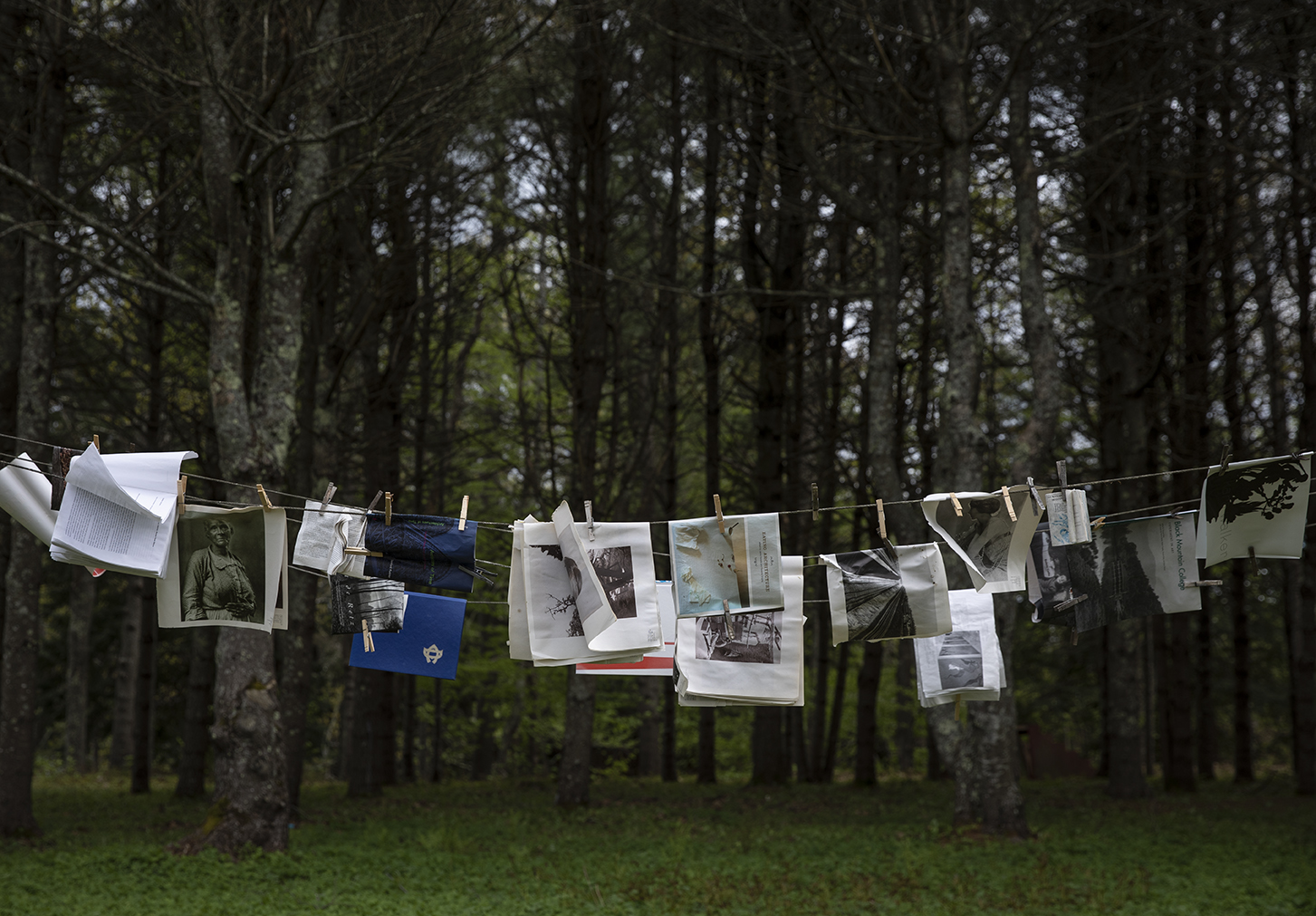
Bordering the grounds, a tidal estuary mirrors this ebb and flow where, from May to November, Conover swims daily. A student of Cravan as well as Loy, sport is an essential part of Conover’s reading, writing, and creative process. “‘The first requirement for an artist is to know how to swim’” wrote Cravan. “‘Genius,’” he insisted, “‘is nothing but an extraordinary manifestation of the body…’”3 For Conover, the built environment, like the archive, intrudes and extrudes the somatic—the body, a divining rod for consciousness. Conover has spent decades preserving, cultivating, and establishing the context of Mina Loy’s creative output, not an easy task for an artist who embodied the stage sets for her own performance. “She had her own ideas about how to package beauty and talent” writes Conover.4 It is crucial for Conover that the collection and the environment remain dynamic. He explains:
The worst thing one can do to a work of art is to finish it. The next worst is to fix it in place. I am constantly rearranging the elements that make up the space in order to see how the pieces speak to one another and produce a visual dialogue over time.5
Yet, Loy’s dispersal of self across media, as well as her emergence and retraction, was part of her own myth-making. It also concretizes her commitment to mapping an aesthetics of pursuit, perceiving and following obscure theoretical, esoteric, and corporeal signs intuitively and intelligently as she did. In her life-long quest to understand consciousness and perception, Loy plotted and stumbled and sailed along her “color picture maps of destiny.”6 She was also complicit in her own map-making—the lines of flight and arrival are part of the tension and attention of her creative aim and the context in which she created. “THE velocity of velocities arrives in starting” Loy writes in “Aphorisms on Futurism”.7 Her own starts were elastic, giving rise to a cosmic trajectory that Conover’s work has plotted.
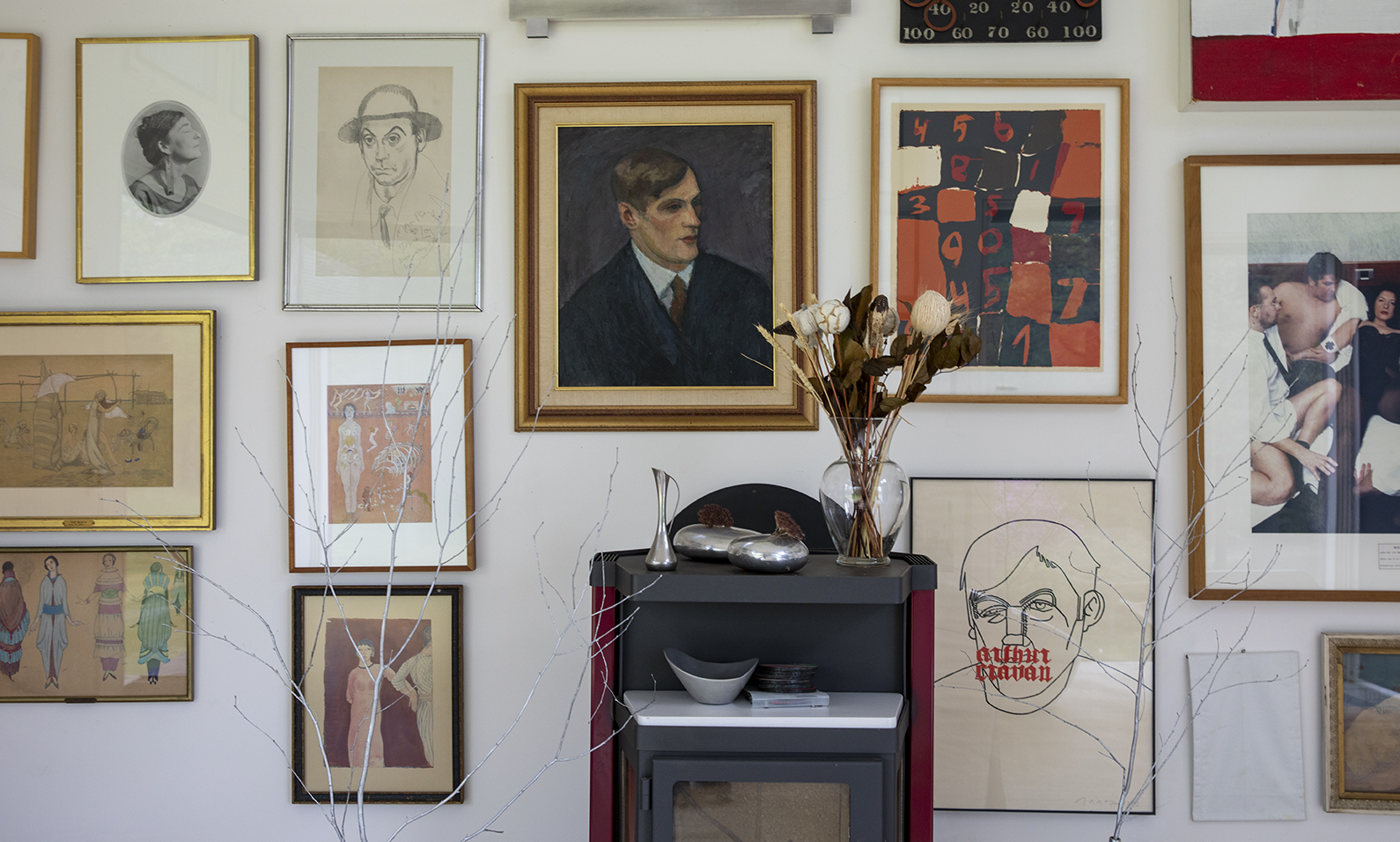
The process of collecting is as important as the collection itself. To understand it is to understand the collector. In addition to “patience, intelligence, experience and a dictionary,” to experience Loy’s poems, paintings, assemblages, even her designs “with profit,”8 is to track their continuation from one medium to another, to apprehend her “multisensual” engagement with the world around her.9 During his life-long “cosmic initiation” as the most devout Loy/alist, Conover has preserved the intention of Loy’s extraterritoriality.10 Even while she mapped her own “serial metamorphosis” Loy’s liminality was never placeless.11 When Jonathan Williams described Conover as appearing as though “out of the blue, out of Bowdoin College,” to take on the task of searching for Loy’s creative output in the early 1970s, he was sensing Conover sensing Loy.12
 Like Loy, Conover’s nowhere was always everywhere. He has come to embody that extraterritorial sensibility himself—a sensibility reflected in the 1500 titles he published as Executive Editor of Art and Architecture at MIT Press, many of which provide the missing links, the bridges, the “hidden wrinkles” in a seemingly disparate but ever-connected ideological and aesthetic cohesiveness.13 In that role, Conover has published work by such luminaries as Marcel Duchamp, Claude Cahun, the Baroness Elsa, Umberto Eco, Slavoj Žižek, and Ai WeiWei, to name but a few. As a purveyor of ideas and language, of interdimensional art and theory, Conover has, like Loy, challenged and overturned the rigidity of conceptual classifications, giving institutional weight and critical value to work that is radical, complex, speculative, at times anti-academic, and always boundary-defiant and crucial. He is also known for publishing unknown writers and artists, who later became iconic voices and artists. More than half of the writers, artists, and architects whose first books he published had never been published before.
Like Loy, Conover’s nowhere was always everywhere. He has come to embody that extraterritorial sensibility himself—a sensibility reflected in the 1500 titles he published as Executive Editor of Art and Architecture at MIT Press, many of which provide the missing links, the bridges, the “hidden wrinkles” in a seemingly disparate but ever-connected ideological and aesthetic cohesiveness.13 In that role, Conover has published work by such luminaries as Marcel Duchamp, Claude Cahun, the Baroness Elsa, Umberto Eco, Slavoj Žižek, and Ai WeiWei, to name but a few. As a purveyor of ideas and language, of interdimensional art and theory, Conover has, like Loy, challenged and overturned the rigidity of conceptual classifications, giving institutional weight and critical value to work that is radical, complex, speculative, at times anti-academic, and always boundary-defiant and crucial. He is also known for publishing unknown writers and artists, who later became iconic voices and artists. More than half of the writers, artists, and architects whose first books he published had never been published before.
When asked in the February–March 1942 issue of View, “What do you see in the stars?” Loy responded:
Our need of an instrument analogous to, yet the inverse of a telescope, which would reduce to our focus the forms of entities hitherto visually illimitable, of whose substance the astronomical illuminations are but the diamond atoms and electrons.14
Conover, I posit, has spent his career constructing such an instrument for Loy, a context which showcases the extensive reach of her work, as well as its familial likeness across genres and generations.
There are many ways to build a legacy. Publishing 1500 books is one of them. But anyone who knows Conover will know this about him: he is not interested in his own legacy or fame. And though his generosity and encouragement of writers and artists, scholars and searchers of all kinds is ceaseless, his allegiance is to something much less quantifiable, to a spirit of the moon, to, as Loy writes in “Apology of Genius”:
the raw caverns of the Increate
…the dusk of Chaos
to that imperious jewelry of the Universe
—the Beautiful—15
even in its most grotesque. Like Loy, Conover’s cerebral maneuvers are motivated as much by intellect as intuition and he understands like she did that,
the smallest person, potentially, is as great as the Universe.16
The process of his collecting is a conjuring. It summons its own becoming, revealing an immersive poetics, an architecture of performance, a language of athleticism.
Conover’s commitment to Loy is fundamentally a commitment to continue her quest. It is tempting to read the fortuitous typo in Loy’s 1923 publication of Lunar Badecker—the errant “c” inserted by the French printer in Dijon or by her publisher Robert McAlmon—as one that underscores a central precept of Loy’s polyvocality and multilingualism: that language is malleable and that breaks in the frame of grammar let the light in. From the hindsight of 96 years and the intervening revelations, we might read that “c” as a tribute to both Cravan and Conover and the searching for and by both.
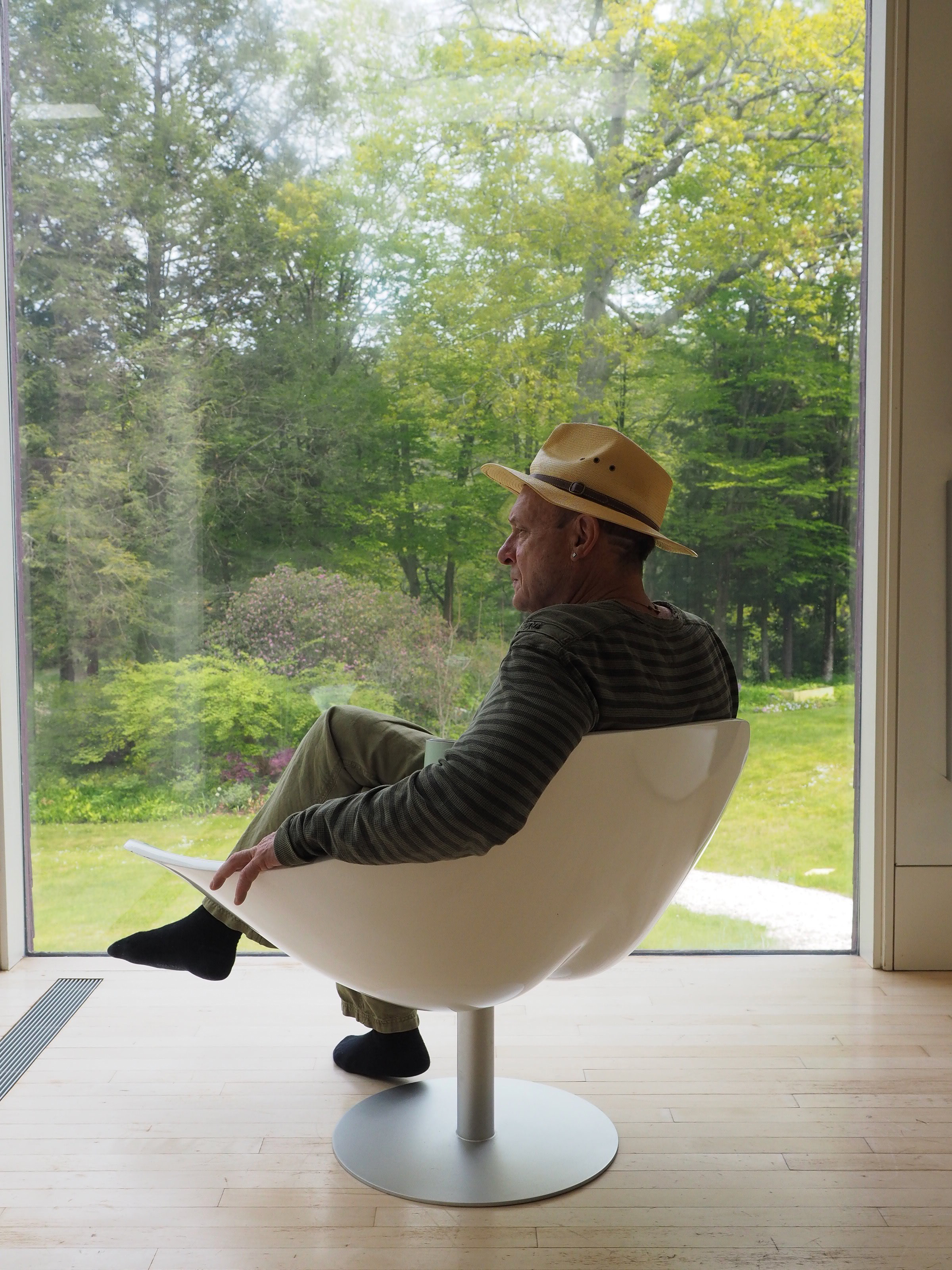
“Perhaps it was her wish to remain unchosen,” muses Conover,17 but he did choose her, or maybe she chose him. Either way, the vanishing point has receded, turned in on itself—“the inverse of a telescope”— and Conover’s framing has brought into sharp focus a celestial storm of Loy’s diamond atoms and electrons.
- Mina Loy,“Lunar Baedeker” LLB 96: 81-82.
- Craig Dworkin, “A Q&A with the MIT Press’s Legendary Executive Editor, Roger Conover,” MIT Press Blog, 15 November, 2018. Accessed 5 July, 2019.
- qtd in LLB 82: lii.
- Conover, LLB 96, xii.
- Conover, Roger. Personal interview, 5 July 2019.
- Loy, “At the Door of the House,” LLB 96, 33.
- Loy “Aphorisms on Futurism” LLB 96, 149.
- Conover, LLB 96, xix.
- Zelazo, Suzanne. “‘The Altered Observation of Modern Eyes’: Mina Loy’s Collages, and Multisensual Aesthetics.” The Senses and Society 4.1 (March 2009): 47-74.
- Loy, “Parturition,” LLB 96, 6
- Loy, “Ephemerid,” LLB 96, 116.
- Williams, Jonathan. “A Note,” LLB 82, xiii.
- Loy, qtd in Conover LLB 96, xil: “‘Can’t you write about me as a hidden wrinkle—the only woman who has been decided enough to forego easy success—etc etc—uninterrupted by the potency of beauty…’”
- Loy, Mina. “View Questionnaire,” View, February-March, 1942, 10.
- “Apology of Genius,” LLB 96, 77.
- Loy, “Aphorisms on Futurism,” LLB 96, 149.
- Conover, LLB 82, xix.